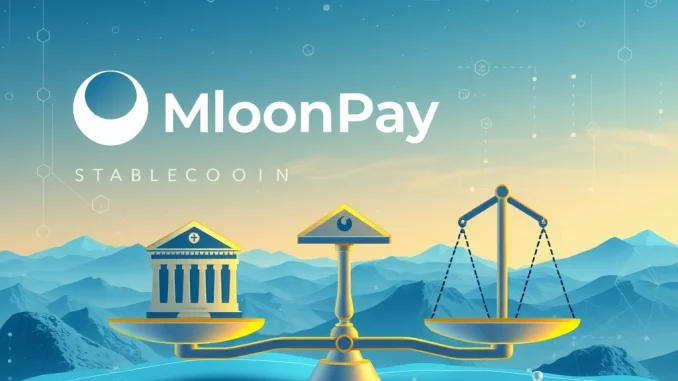
Get ready for some exciting potential developments in the Web3 space! Ivan Soto-Wright, the CEO of Web3 infrastructure giant MoonPay, recently dropped some significant hints during an interview that could reshape how we interact with digital assets. The most buzzworthy possibility? A potential MoonPay stablecoin.
Is a MoonPay Stablecoin on the Horizon?
During a discussion with CoinDesk, MoonPay’s CEO, Ivan Soto-Wright, suggested that the company is exploring the idea of launching its own stablecoin. While details are scarce, this move could position MoonPay as a key player not just in facilitating crypto transactions but also in issuing a core digital asset itself. A stablecoin issued by a widely-used infrastructure provider like MoonPay could potentially offer enhanced stability and integration within their existing services.
Crypto Wallets: The New Bank Accounts?
Beyond the stablecoin speculation, Soto-Wright shared a bold prediction about the future of crypto and personal finance. He believes that digital wallets, the tools we use to store and manage cryptocurrencies, are poised to replace traditional bank accounts for many users. This vision sees wallets evolving into comprehensive financial hubs, capable of handling not just crypto but potentially traditional currencies and other digital assets, offering more control and accessibility to individuals.
DEX CEX Comparison: A Shifting Power Dynamic
Another key prediction from the MoonPay CEO touches upon the landscape of cryptocurrency trading platforms. He anticipates that decentralized exchanges (DEXs) will eventually surpass centralized exchanges (CEXs) in prominence and usage. This prediction highlights a growing trend towards decentralization within the crypto ecosystem.
Let’s quickly look at the core differences in this DEX CEX comparison:
- Centralized Exchanges (CEXs): Operated by a single company (like Coinbase, Binance). Users deposit funds into the exchange’s wallet. Offer high liquidity, user-friendly interfaces, and often wider trading pairs. However, users don’t control their private keys (posing a security risk) and are subject to KYC/AML regulations and potential downtime or hacks.
- Decentralized Exchanges (DEXs): Operate on blockchain technology. Users trade directly from their own wallets, maintaining control of their private keys. Offer greater security (no central point of failure), privacy (often no KYC required), and censorship resistance. Can sometimes have lower liquidity, higher fees (gas costs), and less intuitive interfaces compared to CEXs.
Soto-Wright’s view suggests the benefits of self-custody and decentralization offered by DEXs will become increasingly attractive to users over time.
MoonPay’s Role in Web3 Innovation
As a leading Web3 infrastructure company, MoonPay plays a crucial role in bridging the gap between traditional finance and the decentralized world. Their services, which simplify buying and selling crypto using conventional payment methods, are essential for onboarding new users into Web3. Exploring areas like stablecoins and observing shifts towards DEXs demonstrates MoonPay’s commitment to evolving alongside the broader industry and facilitating future trends.
What Does This Mean For You?
These insights from MoonPay’s CEO paint a picture of a rapidly evolving digital economy. The potential for a MoonPay stablecoin could provide a new, convenient digital dollar alternative. The rise of crypto wallets as primary financial tools could offer unprecedented control over your assets. And the increasing importance of DEXs underscores the move towards a more decentralized and permissionless financial system. Keeping an eye on companies like MoonPay is key to understanding where Web3 is headed.
In Summary
MoonPay CEO Ivan Soto-Wright’s recent remarks offer a glimpse into the ambitious future they envision for Web3. From the potential launch of a MoonPay stablecoin to the prediction that crypto wallets will eventually replace traditional bank accounts and DEXs will surpass CEXs, his comments highlight a strong belief in decentralization and user empowerment in the future of crypto. As a significant player in Web3 innovation, MoonPay’s potential moves in these areas could have a substantial impact on how we all interact with digital assets going forward.



